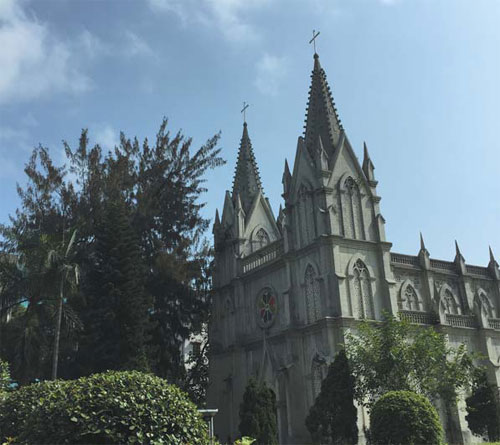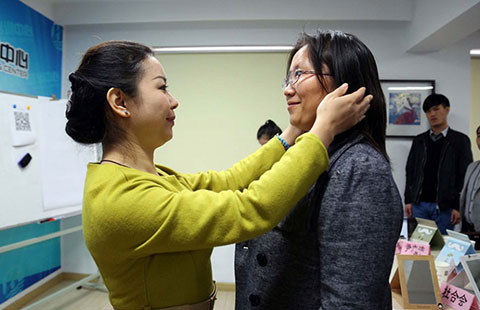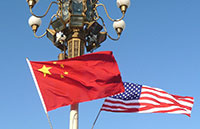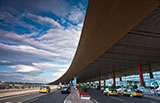City's fortunes transform over time
By Raymond Zhou (China Daily) Updated: 2015-07-13 15:35
 |
|
The Roman Catholic Church, built in 1903, is a historic reminder that the the city served as a concession to the French for several decades. [Zhang Xiao / China Daily] |
The map of China has often been likened to the image of a rooster. If so, Zhanjiang is the foot. A chicken foot may not be noticeable, but those who have tasted it know how delectable it can be, especially when it's enriched by layers of history, writes Raymond Zhou.
You won't be able to find the word "Zhanjiang" in most history books. The word did not exist until 1945, when, with the end of the War of Resistance Against Japanese Aggression, the city was returned to Chinese rule. For the previous 47 years (1898-1945) the bulk of it was a French colony known as Fort-Bayard.
Few in China have heard of this French name, but the Chinese name used during the time was misleading. The city was called Kouang-Tcheou-Wan, or Guangzhouwan, using the current spelling system. The problem is, it has nothing to do with Guangzhou, the provincial capital, which lies 488 kilometers to the east.
Architectural remnants of that era are still visible if you look closely. The best preserved of the French-style buildings include a Roman Catholic church with twin spires, erected in 1903, and the legation of the French consul, a beautiful yellow building constructed in 1925 that saw the shuffling of power in the turmoil of history.
Yatsen Road was the earliest in the downtown area, flanked with French loquat trees. Locals tend to call it "the loquat street". Amid the rapidly rising forests of high-rise buildings, these structures hold tenaciously to the past. Nowadays, some of the street's facade has deliberately taken on French elements to show off a sense of the exotic if not one of history.
Far and beyond
More than 2,000 years ago, fleets of ships carrying silk, ceramics and gold departed from Xuwen, the southernmost town of the peninsula. They traded along what is now known as the Maritime Silk Road, selling their goods for spices and other things from Vietnam, India and Sri Lanka. Some of the Chinese merchandise changed hands until they reached Europe.
All this was started under the reign of Emperor Wu of the Western Han Dynasty (206 BC-AD 24), a political leader with a vision beyond the border.
Although First Emperor Qin had earlier unified China, the Leizhou Peninsula was so far away from the political center of the nation that the phrase "the mountains are high and the emperor is far away" - meaning the place is too remote for the central power to reach - truly applied.
In 112 BC there was a rebellion by the king of Nanyue, a kingdom established after the collapse of the Qin Dynasty (221-206 BC) and encompassing what is now Guangdong, Guangxi and some surrounding areas.
Lu Bode, assigned the title of "Fubo General" by Emperor Wu, vanquished the rebels. He also won the hearts of locals by restoring peace and prosperity to the region. The administrative division he adopted became the base of later rule of the peninsula.
In 40 AD another local rebellion begot another "Fubo General", someone named Ma Yuan who led a fleet of 2,000 ships and an army of 20,000. After his triumph, about 2,000 of his people stayed behind, gaining a name for monkey-like dexterity. Temples bearing the name Fubo can be seen across the peninsula, a testament to their long-lasting legacy.
God of thunder
Zhanjiang people revere thunder. Thunder heralds rain, which is necessary for a good harvest. As a local saying goes, there would be something of a drought if there was no rain for three days and there would be a serious drought if rainless days lasted a week.
- 2015 China International Fair for Investment and Trade kicks off in Xiamen
- China's commodity imports robust in Jan-Aug period
- China stocks rebound 2.92%
- 2015 China box office already past 2014 total
- China foreign trade decline widens in August
- Interview: JP Morgan's senior executive bullish on China
- Innovation, development the focus for NZ mayors
- Lives of freelancers

















